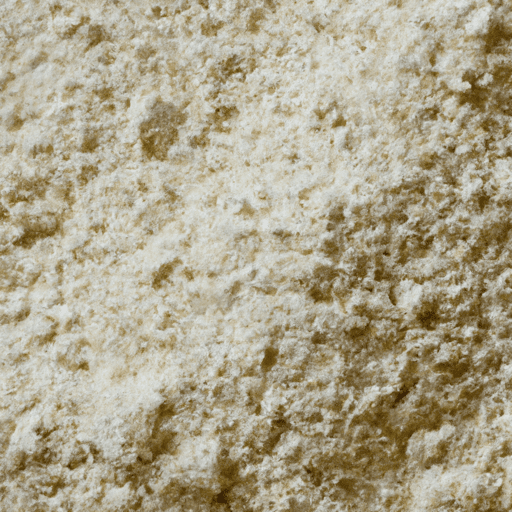Exploring the Versatility of Barley Flour: A Delightfully Nutritious Ingredient
If you’re on a journey to discover unique and nutritious ingredients to enhance your cooking, look no further than barley flour. This versatile grain-based flour offers a delightful array of flavors and textures, making it a fantastic addition to your culinary repertoire. In this blog post, we’ll explore the fascinating world of barley flour, discussing its taste, common uses in cooking, nutritional value, and even some intriguing historical tidbits. Let’s dive right in!
Unveiling the Flavors of Barley Flour
Barley flour possesses a distinct, nutty flavor profile that adds a pleasant earthiness to dishes. It exudes a mildly sweet taste with hints of toasty notes, which intensifies as it is toasted or roasted. When used in baking, barley flour lends a hint of malty flavor, creating a depth that beautifully complements both sweet and savory recipes.
Culinary Applications of Barley Flour
- Baking: Barley flour makes an excellent substitute for all-purpose flour in various baked goods. It adds a unique texture, moisture, and lightness, making it particularly well-suited for muffins, cakes, cookies, and scones. Combining it with wheat flour can offer a pleasing balance of flavors and a distinctive texture.
- Breading and Coating: Utilize barley flour as a wholesome alternative for breading and coating proteins or vegetables. The flour’s slightly coarser texture can lend a delightful crunch to dishes like fried chicken, fish, or crispy vegetable fritters.
- Thickening Agent: Due to its starch content, barley flour can act as a natural thickening agent for soups, stews, and sauces. Its hearty consistency complements the savory elements of broths and helps achieve a velvety texture in your culinary creations.
Nutritional Powerhouse of Barley Flour
Barley flour packs a nutritious punch, making it an excellent choice for health-conscious cooks. Here are some noteworthy nutritional benefits:
- Dietary Fiber: Barley flour is rich in dietary fiber, promoting healthy digestion, reducing cholesterol levels, and aiding in weight management.
- Vitamins and Minerals: It contains essential vitamins like niacin, folate, and vitamin B6, along with minerals such as iron, magnesium, and phosphorus, contributing to overall well-being.
- Slow-releasing Energy: Barley flour has a low glycemic index, meaning it releases energy slowly, keeping you satiated for longer periods and helping control blood sugar levels.
A Glimpse into Barley Flour’s Historical Significance
Barley has an extensive history, dating back thousands of years. It was one of the first cultivated grains, cherished by ancient civilizations around the world. Barley flour’s versatility has allowed it to become a staple in various culinary traditions. From hearty bread in Europe to traditional Chinese porridge, known as congee, and Japanese tea cakes called “wagashi,” it has transcended cultural boundaries, showcasing its adaptability and appeal.
Get Creative with Barley Flour
Now that you’re familiar with its flavors, uses, and nutritional benefits, it’s time to explore the world of barley flour in your own kitchen. Experiment with different recipes, incorporating this grain-based gem into your favorite dishes. Whether you’re in the mood for indulgent cookies or a comforting bowl of soup, barley flour will add that extra touch of uniqueness and nutritional value to your meals.
So let your culinary imagination run wild, and savor the wholesome possibilities that barley flour brings to the table. Your taste buds and your body will thank you for it!
Remember, as with any new ingredient, it’s always beneficial to consult your doctor or nutritionist if you have specific dietary concerns or allergies before incorporating barley flour into your regular cooking routine. Happy cooking!
*Note: The information provided in this article is for educational purposes only and should not replace professional medical advice.
Barley Flour
Origin and History: Barley flour is made from ground barley, a type of cereal grain. Barley has been cultivated for thousands of years and is believed to have originated in the Fertile Crescent of the Middle East. It was one of the first cultivated grains and has been an important food source in various cultures throughout history.
Common Uses: Barley flour is commonly used in baking and cooking. It has a mild, nutty flavor that adds depth to various dishes. It is often mixed with other flours to make bread, muffins, pancakes, cookies, and other baked goods. Barley flour is also used as a thickening agent in soups, stews, and sauces.
Nutritional Benefits: Barley flour is considered a nutritious ingredient. It is a good source of dietary fiber, containing both soluble and insoluble fiber that can help support digestive health. It also provides several essential minerals such as magnesium, phosphorus, and manganese. Furthermore, barley flour contains moderate amounts of protein and is lower in gluten compared to wheat flour.
Unique Properties: One unique property of barley flour is its viscosity. When mixed with water, barley flour tends to create a thicker, more gel-like texture compared to other flours. This property makes it useful for thickening soups and sauces. Additionally, barley flour has a relatively low glycemic index compared to other grains, which means it is digested and absorbed more slowly, providing a more sustained release of energy.
Historical Significance: Barley has a rich history and holds cultural significance in various ancient societies. In ancient Egypt, barley was integral to their diet and economy, and it was also used to brew beer. The Greek writer Hippocrates even praised barley as a medicinal food, recognizing its potential health benefits. Throughout history, barley has been cultivated in different regions worldwide, adapting to various climates and becoming a staple grain in many cultures.




Use the share button below if you liked it.
It makes me smile, when I see it.